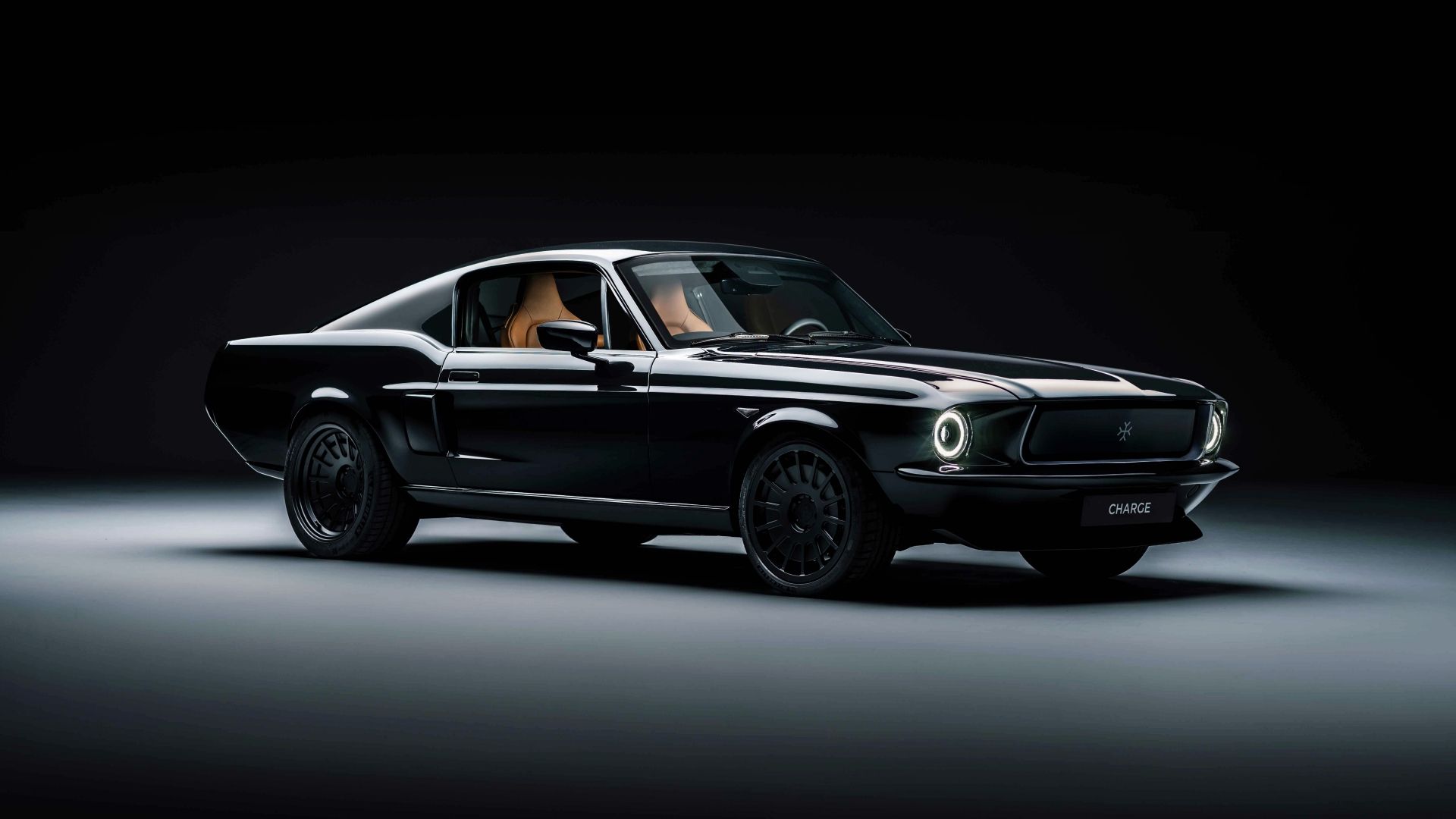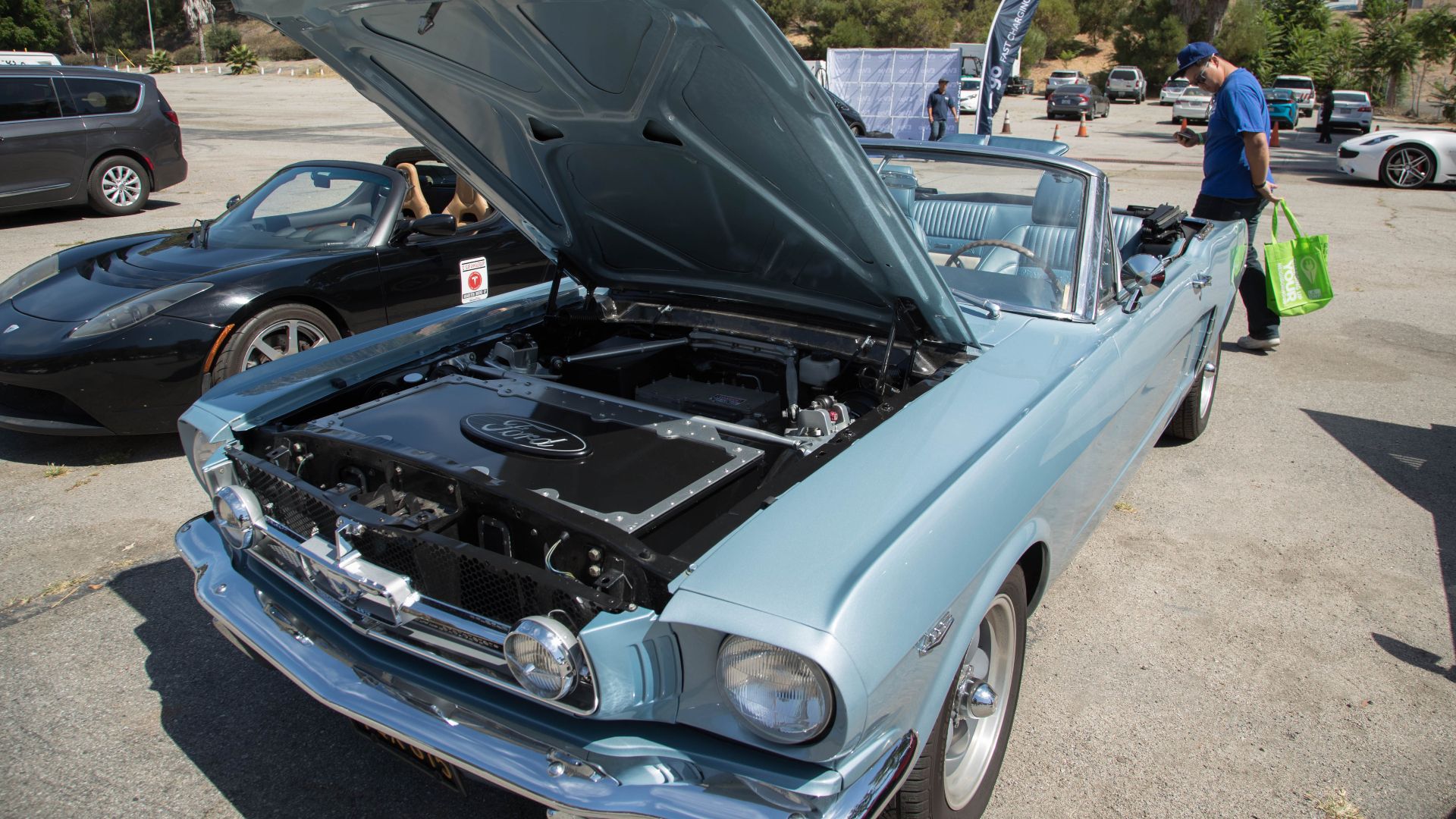As electric vehicles gain popularity, a fascinating new trend among classic car enthusiasts is emerging: the conversion of traditional gas-guzzling cars into sleek and sustainable EVs. It's an exciting time for innovation, and classic car owners are embracing it by retrofitting their beloved vintage vehicles with cutting-edge electric motors. In recent years, this innovative and creative trend has captured the hearts of car enthusiasts worldwide. But what motivates classic car owners to make the switch to electric power? And is it worth it?
Is Converting Traditional ICE Cars To EVs Really A Thing Now?
Retrofitting old petrol and diesel cars with electric drivelines is a growing trend worldwide as people look for sustainable alternatives to traditional vehicles. This process involves replacing the Internal Combustion Engine (ICE) with a cleaner energy source, making the car a zero-emission vehicle. It also allows people to continue using their beloved and costly vehicles rather than scrapping them, which helps reduce waste. To encourage the conversion of old vehicles to electric drivelines, many countries have implemented policies. This has led to many companies offering retrofitting services, including some of the biggest names in the EV-conversion industry such as EV West, Stealth EV, Lunaz, Zelectric, Tadpole Projects, Zero Labs, ETrio, Folks Motor, and GoGoA1, to help future-proof your beloved classic car.
Cons Of Converting A Classic Car To An EV
While some may view this as an innovative and creative trend, there are several reasons why this shift in thinking is not the best choice for classic car owners. One major disadvantage of converting a classic car to an EV is the loss of originality and historical value. Classic cars are valued for their original design and mechanical components, and converting them to an EV can strip them of their originality. Additionally, some classic cars are considered historical artifacts and are protected by law, which means that modifications to the car may be prohibited.
Another disadvantage of converting a classic car to an electric vehicle is the limited range and potential for reduced driving enjoyment. EV-converted classics typically have a limited range of 120-150 miles, which is significantly lower than gasoline-powered vehicles 400+ miles. This can result in more frequent stops to recharge, making long-distance driving less enjoyable. Furthermore, some drivers may dislike the quieter driving experience of EVs, which can detract from the traditional car driving experience.
Pros Of Converting A Classic Car To An EV
Although not advisable for classic car owners, converting a traditional ICE car into an EV can offer some significant advantages. Firstly, converting ICE cars into EVs can be a way to promote sustainability and environmental consciousness within the car enthusiast community. With growing concerns about climate change, many people are looking for ways to reduce their carbon footprint. By converting your classic car to an EV, you'll be driving a vehicle that produces zero emissions and helps to protect the environment. It shows that even classic car lovers can make a positive impact on the environment and encourages others to consider their own carbon footprint.
While for the most part classic cars should be left how they were originally built, the conversion, in some cases, can increase their value. Unlike a traditional combustion engine, electric motors provide instantaneous torque and smooth acceleration. Converting a classic car into an EV can enhance the driving experience, improve performance, range, and reliability to a certain extent and make your vintage ride feel brand new again. In fact, some classic car collectors and enthusiasts are seeking out EV conversions for their prized vehicles, recognizing the unique value they bring to the table. It may even be incentivized soon.
Finally, converting a classic car into an EV allows for the preservation of classic automotive design and history, while simultaneously reducing its environmental impact. This is a win-win for car enthusiasts and environmentalists alike. Imagine cruising down the street in a classic Mustang EV or Corvette EV, but without the guilt of contributing to harmful emissions. All this, however, does not adequately justify the motivation to convert a beast classic car, as some may argue that the allure of a classic car lies in its engine's roar and the sense of power it provides, which an electric conversion may not provide.
Factors To Consider Before Making A Decision!
Before deciding whether to convert a classic car to an EV, there are several factors to consider. The first is the conversion cost and the potential return on investment. According to industry experts, the cost of a high-quality EV conversion can range from $40,000 to $100,000, depending on the donor car's condition. Another consideration is the classic car's condition and value. The condition and value of the classic car are also crucial factors to consider. Converting a classic car to an EV may not be worth the investment if the vehicle is not in good condition or has little historical value. However, if the vehicle is in excellent condition and has significant historical value, a conversion may be worth considering.
The availability of parts and technical expertise is also essential to consider before making a decision. EV conversions require specific technical skills, and finding the necessary parts can be challenging. Consider the availability of parts and expertise in your area before committing to a conversion. The popularity of EV hot rodding in certain areas may cause wait times of six to 12 months before a reputable shop will even begin working on the car. Maybe a bit less if it’s a more commonly swapped car, and maybe more if it’s a unique project. Finally, personal preference and intended use of the vehicle should be taken into account, as some enthusiasts may prefer the sound and feel of a gasoline engine and may not enjoy the driving experience of an EV. Additionally, if the car is intended for use in car shows or exhibitions, preserving its originality may be more important than converting it to an EV.
In The End, Is It Worth It?
While converting certain cars to electric is good, it's a sin to convert vintage cars. The unique engine sound and mechanical connection to the road are integral to the driving experience of a classic or vintage car. Classic muscle cars, with their V-8 engines, also lose their emotional connection when converted to EVs. On the other hand, cars that looked great but never offered the promised performance, such as the Delorean DMC-12 or Volkswagen Microbus, would work well as EVs. If you have a valuable classic car, converting it to an EV may not be the best choice. While the idea of converting classic cars into EVs may seem like a good way to reduce emissions, it is not without significant drawbacks. We need to instead focus on developing new technologies and solutions that are specifically designed for eco-friendly transportation, rather than converting cars. But if you are still keen on retrofitting your classic car or any of your traditional ICE cars to an EV, it is advisable to carefully consider all factors before making a decision and consult with experts in the field.





